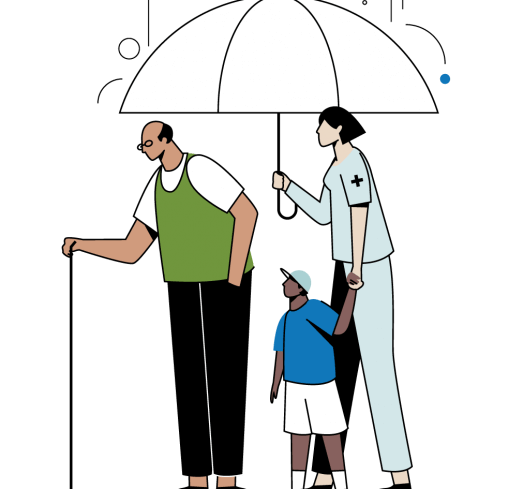
Building an acute behavioral health care program: Interview with Dr. Herbert Harman from Vituity
AVIA
Insights
AVIA

For many patients, transportation is one of the primary barriers to accessing quality medical care in their community. It’s estimated that 3.6 million people per year do not obtain medical care because of transportation issues. Nearly 60% of Medicaid patients with one or more emergency department visits in the past year reported facing deficits in transportation, driven by geographic, infrastructure, or financial factors.
To combat these deficits in access to care, some health systems are implementing non-emergent medical transportation (NEMT) programs to serve their communities. Two AVIA Members, BJC HealthCare and ChristianaCare, have recently rolled out NEMT programs for their patients. We spoke with Brett Ramsey, Program Manager at BJC HealthCare’s Healthcare Innovation Lab, and Erin Booker, Vice President for Community Health and Engagement at ChristianaCare, to learn more about how they successfully created and launched their NEMT programs.
Non-emergent medical transport (NEMT) programs are designed to support individuals who have difficulty accessing healthcare and community-based resources due to transportation barriers.
NEMT programs often use third-party transportation providers to get patients to and from the hospital, doctor’s offices, or another medical office, without the use of ambulances. When implemented successfully, these transportation programs can make discharge more cost effective, reduce missed appointments, and improve care coordination.
Booker and Ramsey highlighted several key clinical and operational areas where NEMT programs make an impact:
Outside of clinical and operational benefits, both BJC HealthCare and ChristianaCare recognize the importance that transportation has in improving health equity in their communities, and have already seen success in reaching underserved areas with their NEMT program.
“Transportation is one of the biggest barriers patients have to accessing care,” said Booker. “It’s incredibly important to remove that barrier so patients can receive the clinical care they need.”
“Transportation is one of the biggest barriers patients have to accessing care. It’s incredibly important to remove that barrier so patients can receive the clinical care they need.”
According to Ramsey, 58% of the patients who use NEMT through BJC HealthCare’s program come from neighborhoods with an Area Deprivation Index (ADI) of 9 or 10, indicating they are highly disadvantaged in income, education, employment, and housing quality. People who live in these areas have a higher readmission risk than those in neighborhoods lower on the ADI scale and often didn’t have access to reliable medical transportation before the NEMT program.
ChristianaCare: Currently, ChristianaCare’s NEMT program is used by their community health workers, health educators, and community outreach coordinators to arrange rides for patients. According to Booker, these community health workers are closely connected to high-acuity patients and their unique needs and are in the best position to arrange transportation when and where these patients need it. ChristianaCare is also utilizing NEMT in their rehabilitation services to assist in providing patients the appropriate level of transportation needed to attend recurring meetings. Additionally, they plan to pilot the program in a few primary care practices, arranging rides for patients who indicate during the booking process that they don’t have access to transportation.
BJC HealthCare: As a large health system, BJC HealthCare has been rolling out the NEMT program to individual practices under their umbrella. Currently, the program is live at approximately 10 locations or departments, with each controlling their own budget, marketing, and how they use NEMT for their patients. The speed of the rollout and uptake of the NEMT technology has varied from group to group. For their medical group, they had to build a program from scratch and get buy-in from key stakeholders within the group, leading to a slower rollout and uptake. Their emergency departments, on the other hand, had been using cab vouchers in the past and were quicker to adopt and scale the NEMT digital solution.
When selecting NEMT solutions, both health systems needed a solution with a wide range of use cases. BJC HealthCare’s goal was to roll out NEMT across the entire health system, and ChristianaCare needed a local option that could easily integrate with Delaware state agencies. While ChristianaCare narrowed their choice down to RoundTrip due to the product maturity and experience in Delaware, BJC HealthCare leaned heavily on AVIA to help them with the digital solution search process.
“Implementing NEMT programmatically across a health system was something we didn’t know how to approach. We went to AVIA with a list of needs, and they worked with us arm-in-arm to find a vendor [Kaizen] that checked all the boxes,” said Ramsey. “AVIA also went through the RFP with us lock-step and worked to gain buy-in from a diverse group of stakeholders within BJC Healthcare throughout the procurement process.”
“We went to AVIA with a list of needs, and they worked with us arm-in-arm to find a vendor that checked all the boxes. AVIA also ... worked to gain buy-in from a diverse group of stakeholders within BJC Healthcare throughout the procurement process.”
Look for a strong digital solution partner: Booker recommends looking for a digital solution company that is a true partner, not a plug-and-play solution. During the pandemic, ChristianaCare and RoundTrip quickly pivoted to offer safe transportation to COVID-19 patients needing antibody treatment.
“My biggest suggestion for health systems is to find a solution that will work alongside you,” said Booker.
Take it in steps: Ramsey suggests not trying to push a digital solution out to the whole health system at once. Instead, select a few key areas to test out the program, let them get familiar with the program and understand the benefits, and they’ll evangelize the program to the rest of the health system.
Understand your market: Understand the profile of patients who will be using this program, how many there are, where they live, and what their service level needs are.
Examine your health system: Outside of looking at your target patient population, Ramsey also suggests examining your internal resources. Who will be leading the program? Which staff will be taking on the day-to-day program rollout work? Do you have the budget you need to effectively serve the patient population you outlined?
AVIA is the leading digital transformation partner for over 50 health systems across the US, including BJC HealthCare and ChristianaCare. To learn more about how AVIA can help you implement a NEMT program and achieve digital transformation in your organization, contact us today.